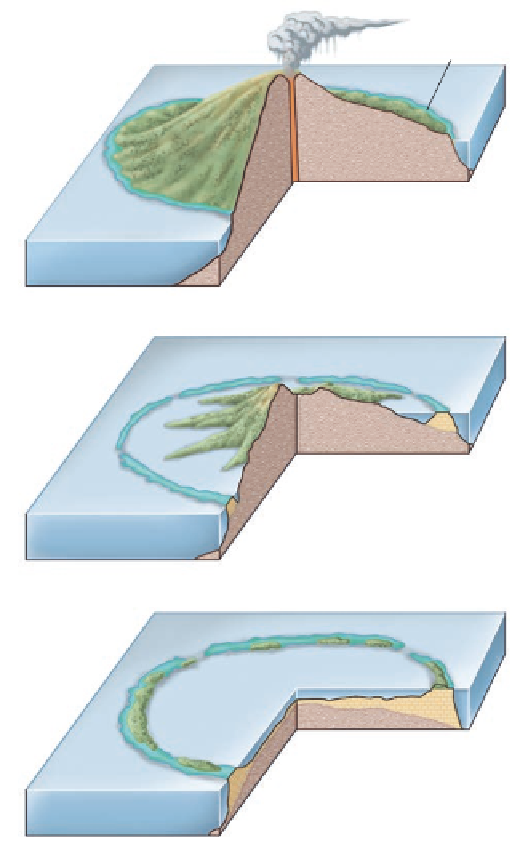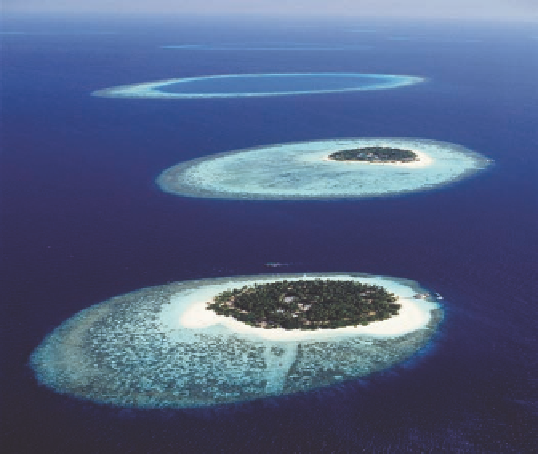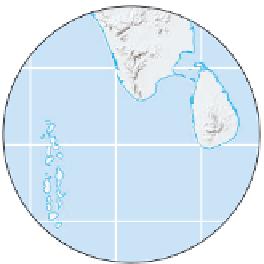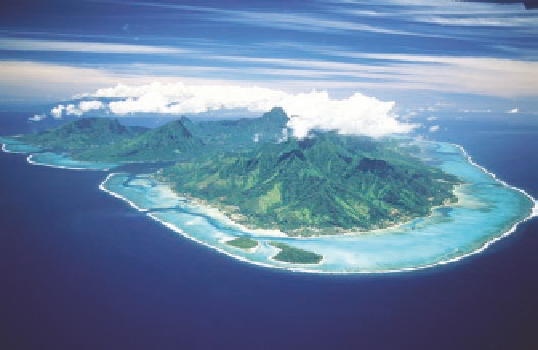Geoscience Reference
In-Depth Information
either by a deep and wide lagoon or, in some
cases, by several kilometers of open ocean
that is much deeper than the water above
the coral. The best-known barrier reef is
the Great Barrier Reef in Australia. This
spectacular reef is actually a complex of
more than 2000 individual reefs that lie
about 50 km (30 mi) from the northeast
Australian coast. This complex of reefs ex-
tends for about 2000 km (1250 mi), making
it the longest reef system in the world.
A third type of coral reef is an atoll.
Atolls
are
semicircular reefs that are most closely associated with deg-
radation of volcanic islands. These reefs evolve in a predict-
able pattern. In the first stage of development (Figure 19.33a),
a fringing reef grows on the nearshore platform surrounding
a relatively new volcanic island. In the second stage of devel-
opment (Figure 19.33b), the volcano is dormant and begins to
wear down and become somewhat submerged due to erosion
and subsidence. During this phase of reef development, the reef
becomes more like a barrier reef because it is separated from
170° E
160° E
180°
Equator
SOLOMON
ISLANDS
150° E
Pacific
Ocean
10° S
FIJI
20° S
Moorea
Island
AUSTRALIA
30° S
40° S
NEW ZEALAND
Figure 19.32 Coral reefs.
A fringing reef along the island of
Moorea in Tahiti, South Pacific Ocean.
island, such as the one shown in Figure 19.32. A second kind
of reef is a
barrier reef
, which is a line of coral that is roughly
parallel to the shore. Such reefs are separated from the coast
Volcanic
island
Coral grows on shore,
forming fringing reef
INDIA
12° N
SRI LANKA
Maldive
Islands
6° N
Indian
Ocean
72° E
Equator
80° E
76° E
(a)
Coral separates from land,
forming barrier reef
Lagoon
Island subsides
(b)
Coral growth continues,
forming atoll
(d)
Figure 19.33 Three-stage evolution of an atoll.
(a) During
the first stage, a fringing reef grows on the shallow platform sur-
rounding a volcanic island. (b) In the second stage, the volcano
begins to collapse on itself, which separates the reef from the
landform, resulting in a barrier reef. (c) With time, the volcanic is-
land is entirely submerged, leaving only the coral above water as
an atoll. (d) This photograph of the Maldive Islands in the Indian
Ocean illustrates the evolution of atolls, beginning with the fring-
ing reef in the foreground.
Shallow
Lagoon
Island submerged
(c)

















